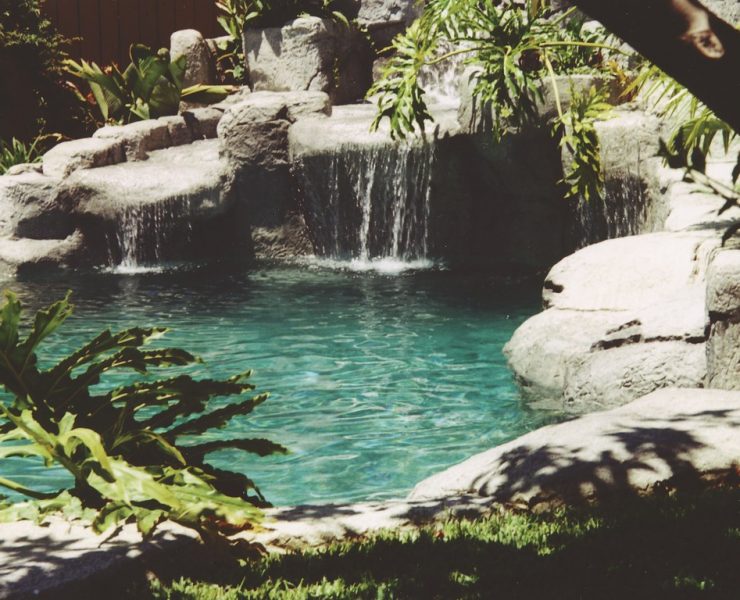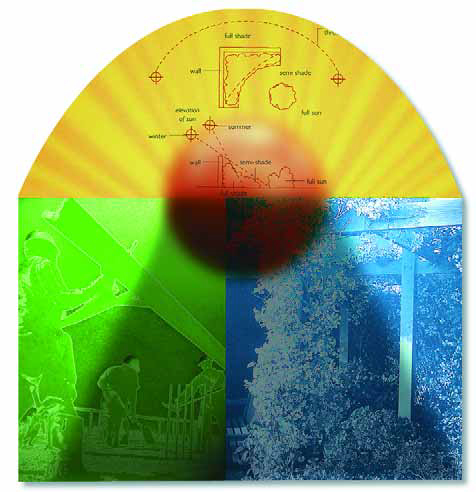construction
It's a tale of two professions: Pool and spa people are taught to keep things dead; pond people are taught to keep things alive. Pool people sell chlorine; pond people sell de-chlorinator. Pool people sterilize; pond people fertilize. This contrast in approaches to basic water maintenance is perhaps the most significant difference between two trades that are coming into closer and closer contact with one another every day. At issue between the two groups is whether to work against nature in a sterile system, or work with it to create an ecosystem. Each discipline has a foundation in the science of water chemistry and both have a place in the world - but beyond that (and as the table below demonstrates), things really couldn't be much different. As more and more pool/spa professionals move into water gardening and more and more landscape designers and architects get into pools and spas, there's an increasing need for all of us to understand these water-treatment distinctions and the basics of each approach. I come from the pond side, so I'll cover things from that perspective in a pair of articles - a science-oriented overview this time before we
The consumer's appetite for beautiful water and creative watershape design has grown by leaps and bounds in recent years - and expectations, it seems, are rising right along with the hunger for exceptional details and impressions. Perimeter-overflow pools and basins are what an increasing number of consumers are after these days, and there's special interest in what are called "wet-edge applications," where the water rises to deck level and flows into a channel slot at the back edge of the coping. It's an amazing look - and harder to
Some details seem simpler than they really are. A case in point is the one I'll describe this time - a detail I call a thermal ledge. In one sense, it's really just a large a big bench located a few inches below the water's surface, but in terms of what it is structurally and what it does to increase enjoyment of a pool, it's something truly special. The ledge pictured here is visually interesting in the way its stone surface picks up the rockwork used throughout the deck and the barbecue area and within the pool itself. As important, it provides the homeowners and their guests
The ancient Celts transported huge slabs of stone over long distances to create religious circles at Stonehenge and Avebury. The Romans used stone to build their aqueducts. From the pyramids of Egypt to the Acropolis in Athens, from the Great Wall of China to the great castles of Europe, stone has been the raw material of choice for our greatest and most enduring structures. Through the ages, stone has been a well-used material because it is both durable and readily available. It's hard to find a town in Europe without walls constructed of local stone, and all you need do is drive through
Whether it's done using only a tape measure and a pair of experienced eyeballs or requires the help of satellites orbiting the planet, every construction project is surveyed before the work begins. In fact, surveyors have been plying their trade for thousands of years, and their services have been valued for one simple reason: It's really a good idea to measure the size and shape of the ground before you try to build on it. In today's terms, surveying is defined as the process of taking accurate measurements of the land on the X-, Y- and Z axes (that is, in three dimensions) and then translating that data into a usable (usually printed) format. There are several different surveying methods used to measure, process and communicate this critical information, and choosing the right one is essential to getting any watershaping project off to a sound start. So how do you determine the level of detail required and communicate your need to the surveyor so he or she can give you the appropriate level of information? Let's take a look at the different types of surveys in common use and review what those options mean in terms of creating a truly useful array of
When it's completed sometime in mid-2002, the Mesa Indoor Aquatic Center will be among the premier U.S. facilities for competitive swimming, diving, water polo, synchronized swimming and synchronized diving. Once it's up and running, MIAC will be the country's largest indoor competitive swimming facility owned and operated by a municipality; just as certainly, it will also act for years to come as host to countless world-class aquatic competitions. A project like this
It's something we in the business overlook all too often: Swimming pools, kids and summertime go together. That's why pools have been so enduringly popular, even at a time when watershapers seem to be focusing more than ever before on principles of design and how their work can be artfully integrated into the landscape. I came to building pools from an extensive background in building man-made rocks for theme parks, which has colored my perspective on the way my pools are used. I've also been swimming in backyard pools since I was a kid, and I've built all sorts of rockwork designs for all sorts of
I truly enjoy including shade structures in my designs. Whether I'm working with an overhang, an arbor, a loggia, a pergola or some other structure (and, yes, they are all different), I see them as ways to create visual extensions of a house - and wonderful places to enjoy being next to the water. There is, of course, as much art and skill to designing and installing the right shade structure as there is to setting up all of the other features of a great backyard. Done well, a structure that projects out from a house will pull your eye from inside to outside while it provides relief from the sun. Similarly, freestanding shade structures
LeRoy, N.Y., is an historic village that's most famous (or most notorious?) for being the birthplace of Jell-O. Far more significant to me, however, is the fact that the town is filled with beautiful 19th-century homes that run the architectural gamut from Colonial to Italianate to Victorian in style. It's a beautiful place, and the site of one of my firm's most unusual projects in recent memory. The home featured in this article is a Second Empire Italianate estimated to be about 140 years old. It's a prime example of 19th-century craftsmanship, from the Mansard roof with its scrolled cornices to the drive-through porte-cochere and the wraparound porch with its beefy wood railings. It's definitely an architectural treasure, filled with the kinds of details that have been lost as far as today's custom-built homes are concerned. Mindful of those special touches, we set about designing a similar level of detail into the landscaping in creating gardens and watershapes that brought real tranquility to
In the ballet of sequenced water, you'll find a repertoire of effects for watershapes of all kinds. Like individual dance steps, these water effects can be beautiful on their own - or they can be used in combination with other effects to create elaborately choreographed shows that dazzle, delight and entertain. From simple to complex and from small to utterly huge, sequenced-water effects are truly amazing, and the nice thing is that they can be incorporated into all kinds of watershapes. We'll take a look at some of the possibilities here as a means of defining why you and your clients should think about incorporating the devices needed to make them work in your projects. There are practical issues, of course, so we'll also cover the process of designing for sequencing and the considerations involved in the creative effort, as well as discussing the ins and outs of programming and commissioning for sequenced watershapes. In an extensive sidebar, we'll also take a look at available technologies and their strengths and weaknesses. Before we get into






















